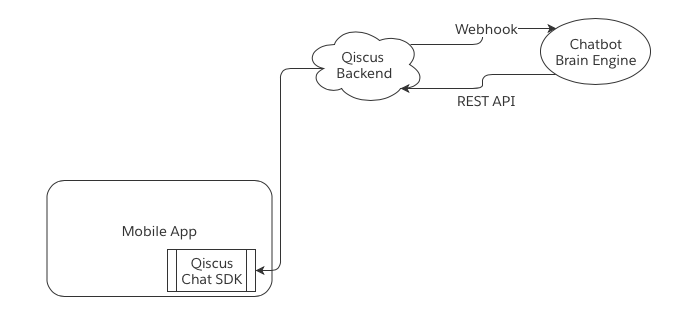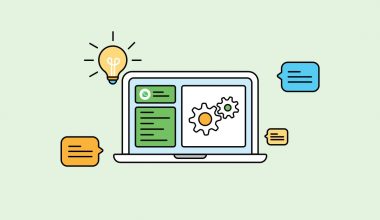Customer expectation today, related to high-speed response to any business or services is very high. People are expecting very immediate answer or response to company or customer service agent, just like they are expecting chat response from their friend. This new expectation will make company need to catch up and being innovative. One of obvious solution for this is by introducing chatbot, which can help to respond and answer the customer’s query as fast as possible.
However, one of the main difficult parts of having chatbot is integrating with our apps. Most chatbot in the market is directly available in the social media, but very little of them easily available and integrate-able in your main product: mobile apps.
It takes so much effort and time to create a chat feature in your app, the interface, and also the middleware backend service to connect between real-time server to the chatbot backend. You will also need to make sure the chat UI work well without any lagging. Furthermore, the chatbot response also needs to trigger message that comes with Push Notification to make sure customer still get the message even when they are not inside the app, otherwise, you may drop your customer retention metrics.
How can Qiscus help?
Fortunately, you can integrate your own chatbot easily with the help of Qiscus Chat SDK for Mobile. It is available for Android and iOS. All you have to do is to integrate your own chatbot engine to Qiscus backend server. The rest integration and chat component can be done easily by embed Qiscus Chat SDK in your mobile app.
Integrate your own chatbot engine to Qiscus backend server blog post is already available here. You can also look at the repository on that sample of echo bot.
After reading and following the steps of that blogpost, you will be able to integrate your own chatbot into Qiscus backend system. Now left with the steps to integrate that chatbot into your own mobile apps.
Qiscus has very clear documentation related to integration of chat SDK here for Android, and this is for iOS.

The idea is that you now have Qiscus SDK in your mobile app, and then you will need to create a room (either single or group) with the chatbot user id.
For example, you will need to call this:
Qiscus.buildChatWith("YOUR_BOT_QISCUS_ID") //here we use email as userID. But you can make it whatever you want.
.build(this, new Qiscus.ChatActivityBuilderListener() {
@Override
public void onSuccess(Intent intent) {
startActivity(intent);
}
@Override
public void onError(Throwable throwable) {
//do anything if error occurs
}
});
By calling that method, you are creating a single room with a bot that you already registered in Qiscus. Every message that coming to Qiscus will be forwarded to your bot engine. The bot engine will then filter the message is belong to bot or normal user. If the message belongs to bot, the engine will then process the text and response by creating post message request to Qiscus backend using REST API call.
Qiscus is also supporting custom payload that you can use to send information that is needed for creating any form of bubble chat. For example, if you want to send some question that requires user input via button, Qiscus Chat SDK can help you to handle that.
Qiscus also have Push Notification ready for both Android and iOS! So you don’t need to worry on how to integrate your own chatbot into push notification in your mobile. All you have to do is following the instruction here.
That’s all what you need to integrate your own chatbot into your own mobile app! If you have any further question related to this article or even beyond that Qiscus can help, please do not hesitate to contact us at [email protected].



